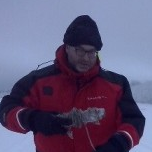Surface Water Quality Modelling
A special issue of Water (ISSN 2073-4441). This special issue belongs to the section "Water Quality and Contamination".
Deadline for manuscript submissions: closed (30 November 2022) | Viewed by 25196
Special Issue Editor
Interests: surface water quality modelling; ice-jam flood hazard mapping; ice-jam flood risk assessment; remote sensing of river ice covers; river ice hydraulic modelling
Special Issues, Collections and Topics in MDPI journals
Special Issue Information
Dear Colleagues,
Surface water quality modelling has become an important means of better understanding aquatic and riparian ecosystem processes at all scales, from the micro-scale (e.g., bottom sediment dynamics), to the meso-scale (e.g., algal bloom growth) and the macro-scale (e.g., the role of cascading reservoirs on sediment transport). Increasingly, surface water quality models are being coupled to other models (e.g., hydrological models) to determine catchment area impacts on water quality. These impacts include future climate change and land-use developments. Coupling to water resource dynamics models also provides insight into changes in water supply and demand and flow regulation as they relate to surface water quality. Modelling the quality of surface waters under ice-covered conditions has also gained special attention, due to the increased realization that a holistic all-year perspective is required to deepen our understanding of aquatic ecosystem functioning (e.g., impact of lake ice phenology on spring succession of phytoplankton). In this context, I invite you to submit a contribution to this very important topic.
Dr. Karl-Erich Lindenschmidt
Guest Editor
Manuscript Submission Information
Manuscripts should be submitted online at www.mdpi.com by registering and logging in to this website. Once you are registered, click here to go to the submission form. Manuscripts can be submitted until the deadline. All submissions that pass pre-check are peer-reviewed. Accepted papers will be published continuously in the journal (as soon as accepted) and will be listed together on the special issue website. Research articles, review articles as well as short communications are invited. For planned papers, a title and short abstract (about 100 words) can be sent to the Editorial Office for announcement on this website.
Submitted manuscripts should not have been published previously, nor be under consideration for publication elsewhere (except conference proceedings papers). All manuscripts are thoroughly refereed through a single-blind peer-review process. A guide for authors and other relevant information for submission of manuscripts is available on the Instructions for Authors page. Water is an international peer-reviewed open access semimonthly journal published by MDPI.
Please visit the Instructions for Authors page before submitting a manuscript. The Article Processing Charge (APC) for publication in this open access journal is 2600 CHF (Swiss Francs). Submitted papers should be well formatted and use good English. Authors may use MDPI's English editing service prior to publication or during author revisions.
Keywords
- climate change
- environmental change
- ice covers
- lakes
- modelling
- ponds
- rivers
- surface water quality
- wetlands






